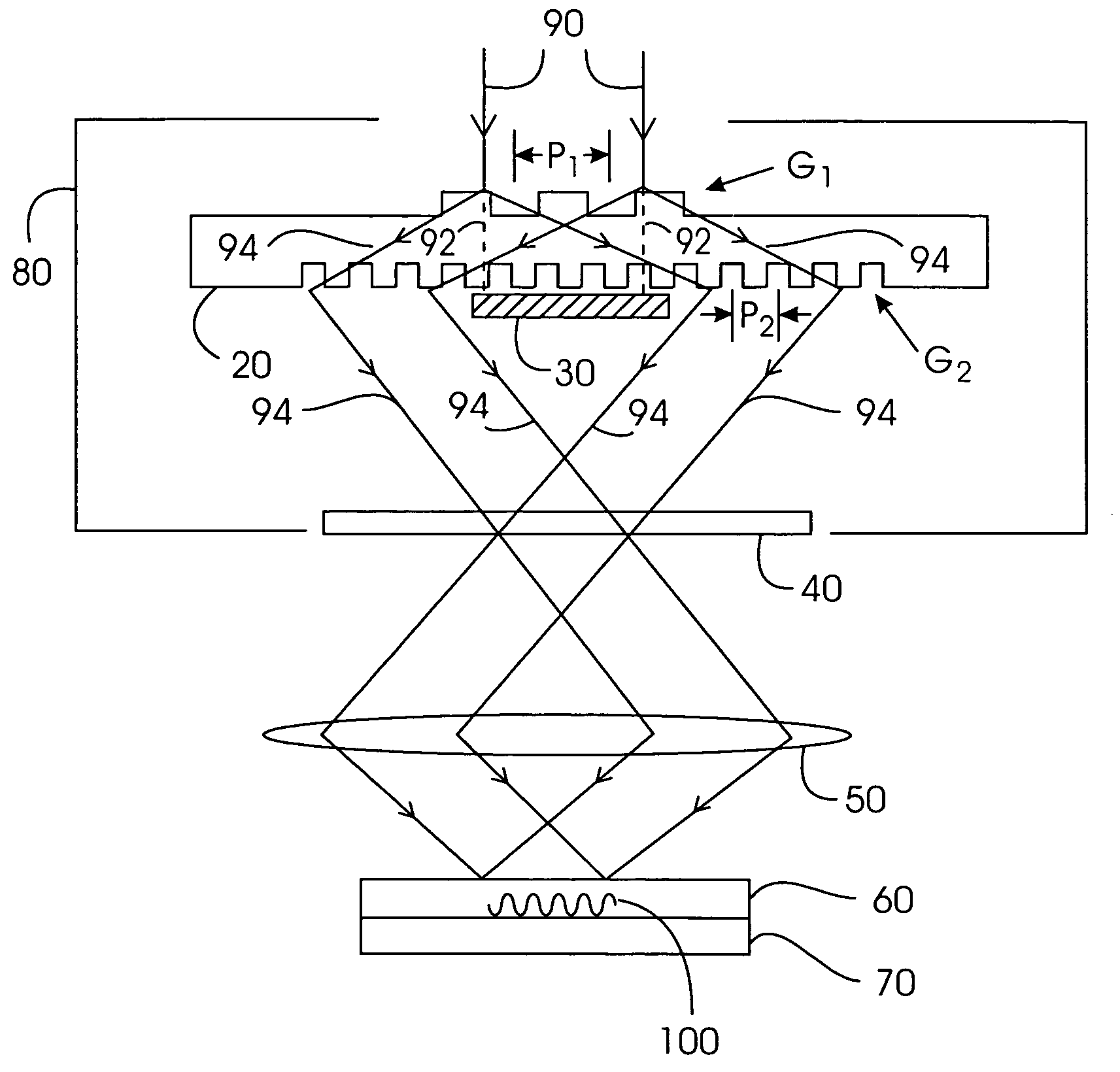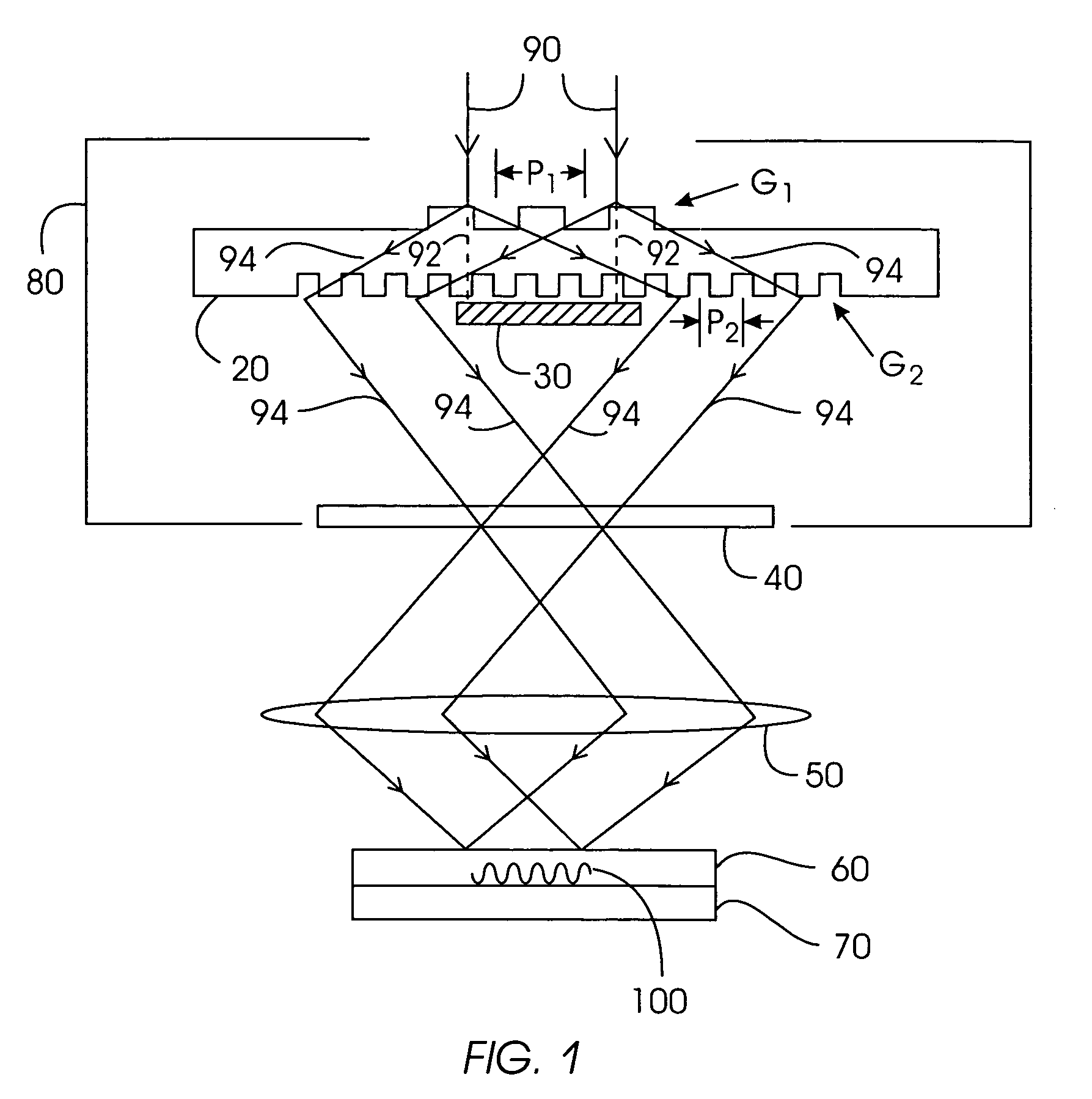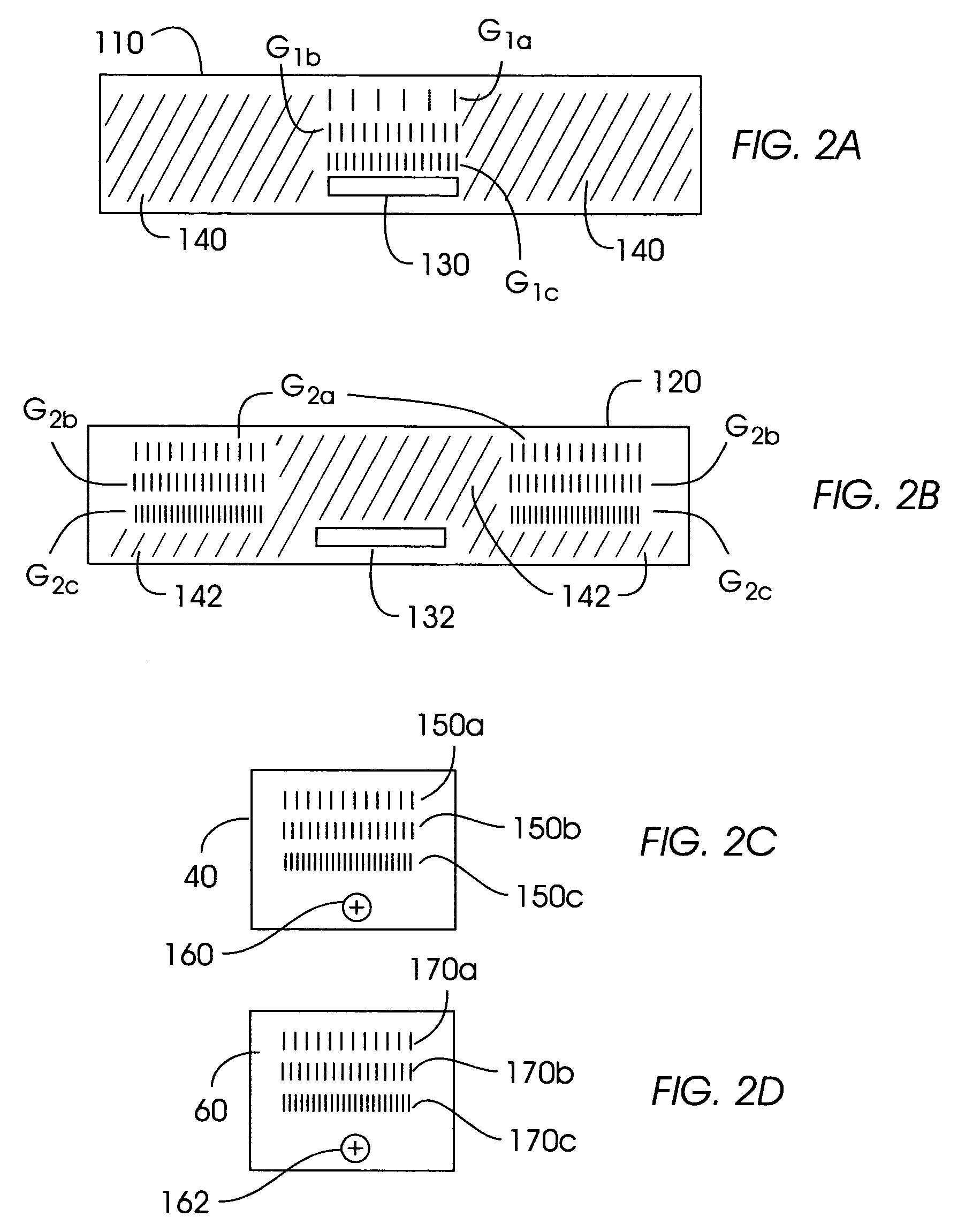Apparatus for characterization of photoresist resolution, and method of use
a technology of photoresist film and apparatus, which is applied in the field of apparatus for characterization of photoresist film resolution, can solve the problems of limiting the usefulness of the method, the inability to easily integrate the means used to generate a sinusoidal optical grating in a photoresist film with standard photolithographic tools, and the increasing stringent requirements of the lithographic imaging system. , to achieve the effect of efficient characterizing the spatial response and facilitating the automatic evaluation
- Summary
- Abstract
- Description
- Claims
- Application Information
AI Technical Summary
Benefits of technology
Problems solved by technology
Method used
Image
Examples
Embodiment Construction
[0022]A diffraction grating may be used to split a beam of light into mutually coherent beams, corresponding to the propagating diffraction orders of the grating. If the grating is placed in the reticle plane of a lithographic projection system, the beams corresponding to the various diffraction orders originating at any single point on the grating recombine at the wafer plane of the system. The angles of incidence of these beams with respect to the normal at the wafer are determined by the pitch of the diffraction grating and the magnification of the projection optics.
[0023]If a reticle could be fabricated in such a way as to function as a diffraction grating with only two diffracted orders, each of which had the same intensity and propagated symmetrically with respect to the normal to the reticle, then the projection optics would function essentially as an interferometer, thereby generating a sinusoidal optical grating pattern in the photoresist film at the wafer plane. However, g...
PUM
| Property | Measurement | Unit |
|---|---|---|
| wavelength | aaaaa | aaaaa |
| wavelength | aaaaa | aaaaa |
| thickness | aaaaa | aaaaa |
Abstract
Description
Claims
Application Information
 Login to View More
Login to View More - R&D
- Intellectual Property
- Life Sciences
- Materials
- Tech Scout
- Unparalleled Data Quality
- Higher Quality Content
- 60% Fewer Hallucinations
Browse by: Latest US Patents, China's latest patents, Technical Efficacy Thesaurus, Application Domain, Technology Topic, Popular Technical Reports.
© 2025 PatSnap. All rights reserved.Legal|Privacy policy|Modern Slavery Act Transparency Statement|Sitemap|About US| Contact US: help@patsnap.com



